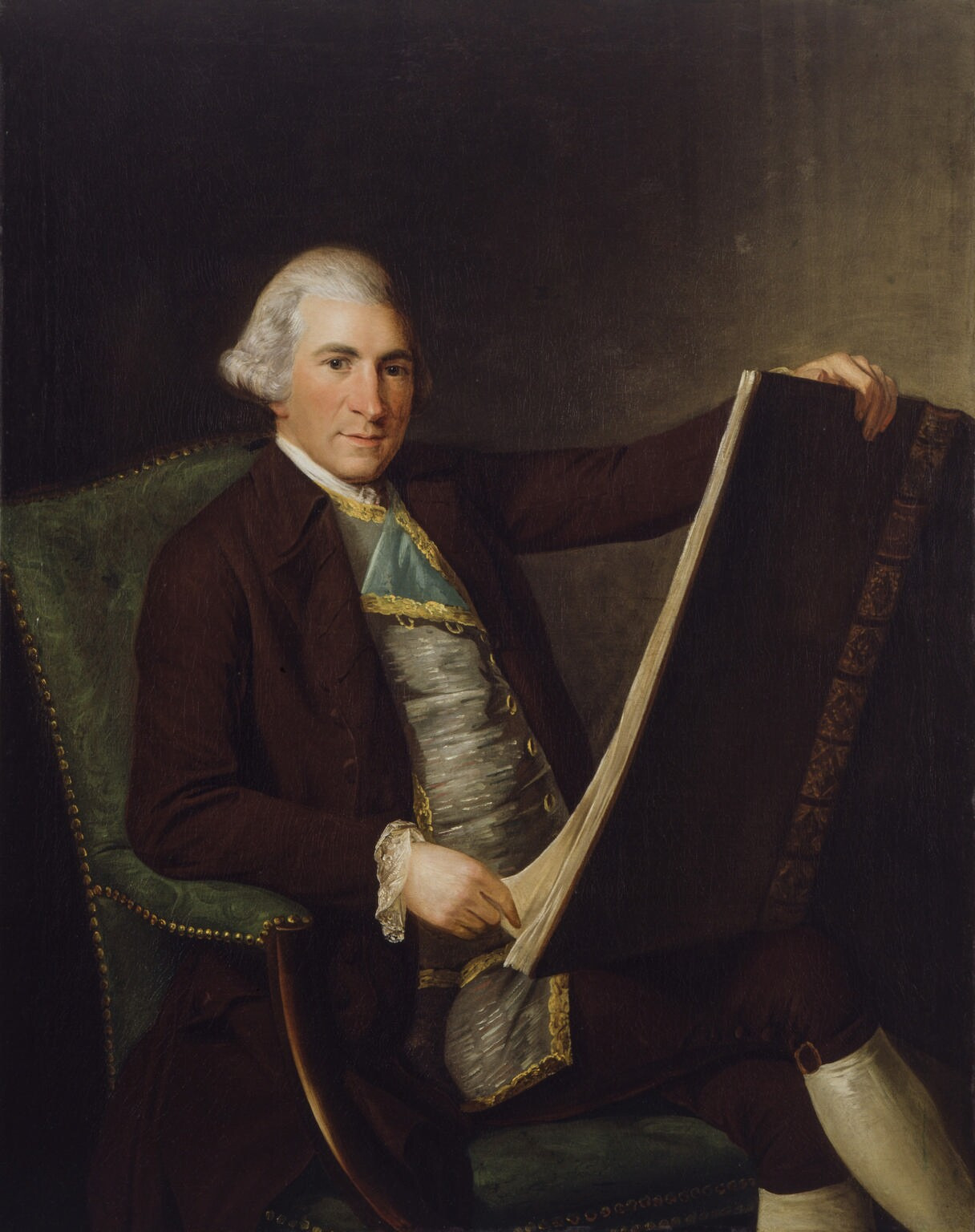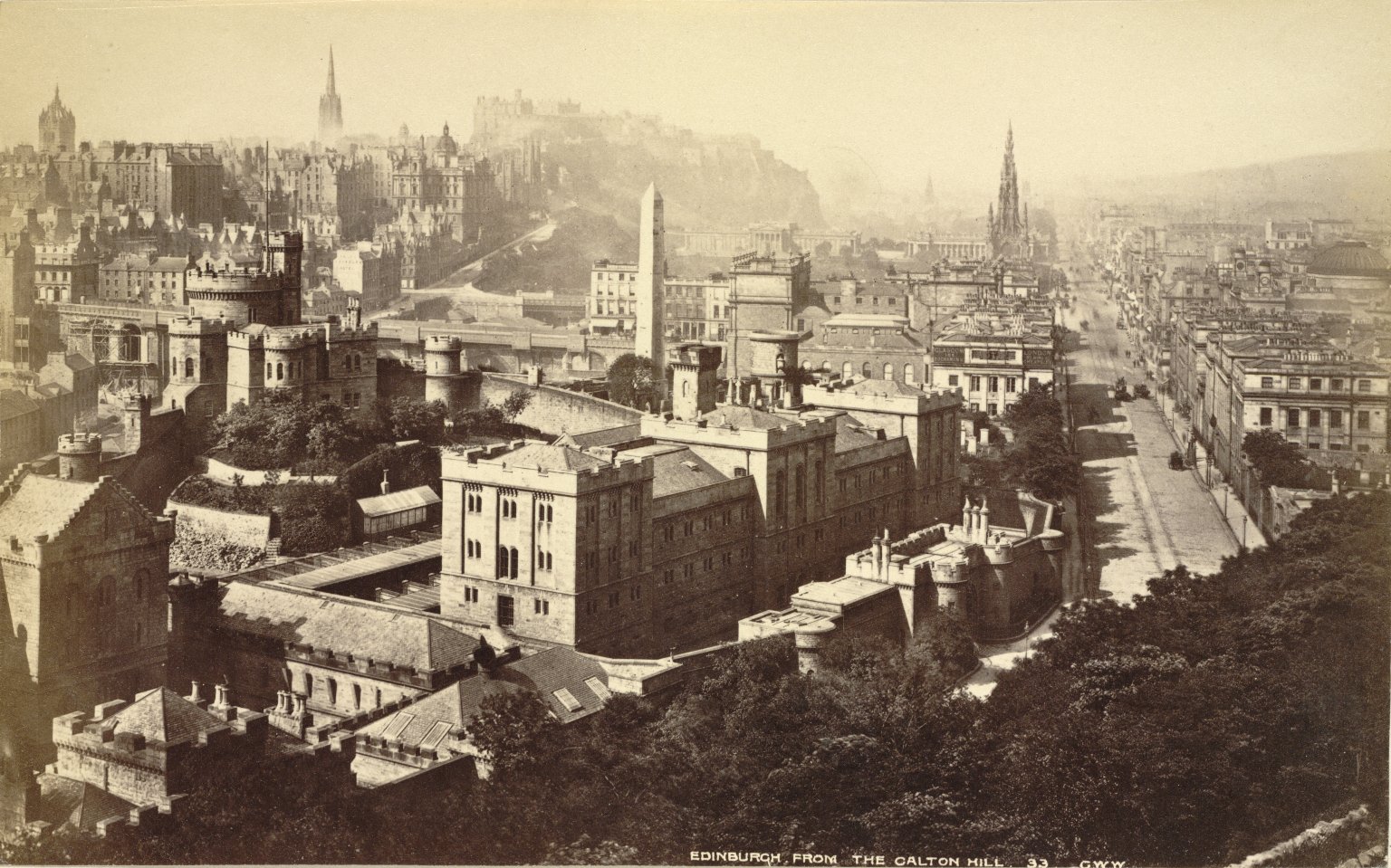|
Governor's House, Edinburgh
Governor's House is a building situated on the southernmost spur of Calton Hill, beside the south-east corner of Old Calton Burial Ground, in Edinburgh, Scotland. It looks out over Waverley Station, the Canongate and Holyrood Park to the south. The building of 1815–17 is all that remains of Calton Jail, once the largest prison in Scotland, completed in 1817. It was designed by Archibald Elliot (1761-1823) who was also responsible for the nearby Waterloo Place and Regent Arch. The House contained the Committee Room used by the Commissioners who governed the prison. Its castellated and turreted form is similar to James Craig's Old Observatory House on Calton Hill, but its design was more likely influenced by Robert Adam's older 'Bridewell' of 1791, which stood alongside the newer prison. The jail closed in 1927 and, except for the Governor's House, was demolished in 1937 to make way for St Andrew's House. Until recently, the building housed the Scottish Government's multi ... [...More Info...] [...Related Items...] OR: [Wikipedia] [Google] [Baidu] |
Robert Adam
Robert Adam (3 July 17283 March 1792) was a British neoclassical architect, interior designer and furniture designer. He was the son of William Adam (1689–1748), Scotland's foremost architect of the time, and trained under him. With his older brother John, Robert took on the family business, which included lucrative work for the Board of Ordnance, after William's death. In 1754, he left for Rome, spending nearly five years on the continent studying architecture under Charles-Louis Clérisseau and Giovanni Battista Piranesi. On his return to Britain he established a practice in London, where he was joined by his younger brother James. Here he developed the " Adam Style", and his theory of "movement" in architecture, based on his studies of antiquity and became one of the most successful and fashionable architects in the country. Adam held the post of Architect of the King's Works from 1761 to 1769. Robert Adam was a leader of the first phase of the classical revival ... [...More Info...] [...Related Items...] OR: [Wikipedia] [Google] [Baidu] |
Buildings And Structures In Edinburgh
A building, or edifice, is an enclosed structure with a roof and walls standing more or less permanently in one place, such as a house or factory (although there's also portable buildings). Buildings come in a variety of sizes, shapes, and functions, and have been adapted throughout history for a wide number of factors, from building materials available, to weather conditions, land prices, ground conditions, specific uses, prestige, and aesthetic reasons. To better understand the term ''building'' compare the list of nonbuilding structures. Buildings serve several societal needs – primarily as shelter from weather, security, living space, privacy, to store belongings, and to comfortably live and work. A building as a shelter represents a physical division of the human habitat (a place of comfort and safety) and the ''outside'' (a place that at times may be harsh and harmful). Ever since the first cave paintings, buildings have also become objects or canvasses of much artistic ... [...More Info...] [...Related Items...] OR: [Wikipedia] [Google] [Baidu] |
Scottish Fiscal Commission
The Scottish Fiscal Commission ( gd, Coimisean Fiosgail na h-Alba) is a non-ministerial office. It was established by the Scottish Parliament to provide independent forecasts of taxes and social security expenditure, and GDP forecasts, to help inform the government's budget and its scrutiny by parliament. It was formally created in June 2014, but moved to become a statutory body following the Scottish Fiscal Commission Act 2016. The commission is currently headed by Professor Graeme Roy. Remit The Scottish Fiscal Commission was established as a non-ministerial office on April 1, 2017, and is structurally and operationally independent of the Scottish Government. Its Commissioners are directly accountable to the Scottish Parliament. It publishes two sets of five-year forecasts a year in line with the Scottish budget process. It also publishes evaluations of its forecasts and working papers on related subjects. Its five-year forecasts cover Scotland's: * Income Tax * Land and Buil ... [...More Info...] [...Related Items...] OR: [Wikipedia] [Google] [Baidu] |
Bute House
Bute House (Gaelic: ''Taigh Bhòid'') is the official residence of the First Minister of Scotland located within Charlotte Square in Edinburgh. Alongside two other personal offices at the Scottish Parliament Building and St. Andrew's House, Bute House also contains a smaller office used by the First Minister when in official residence. Located at 6 Charlotte Square in the New Town, it is the central house on the north side of the square, and was designed by Robert Adam. Bute House was conveyed to the National Trust for Scotland by the Marquess of Bute in 1966. Between 1970 and 1999 it served as the official residence of the Secretary of State for Scotland. Since July 1999, it has been the official residence of the First Minister. The four-storey house contains the Cabinet Room, offices and conference, reception, sitting and dining rooms where the First Minister works, and where Scottish Government ministers, official visitors and guests are received and entertained. The sec ... [...More Info...] [...Related Items...] OR: [Wikipedia] [Google] [Baidu] |
National Trust For Scotland
The National Trust for Scotland for Places of Historic Interest or Natural Beauty, commonly known as the National Trust for Scotland ( gd, Urras Nàiseanta na h-Alba), is a Scottish conservation organisation. It is the largest membership organisation in Scotland and describes itself as "the conservation charity that protects and promotes Scotland's natural and cultural heritage for present and future generations to enjoy". The Trust owns and manages around 130 properties and of land, including castles, ancient small dwellings, historic sites, gardens, coastline, mountains and countryside. It is similar in function to the National Trust, which covers England, Wales, and Northern Ireland, and to other national trusts worldwide. History The Trust was established in 1931 following discussions held in the smoking room of Pollok House (now a Trust property). The Trust was incorporated on 1 May 1931, with John Stewart-Murray, 8th Duke of Atholl being elected as its first presid ... [...More Info...] [...Related Items...] OR: [Wikipedia] [Google] [Baidu] |
First Minister Of Scotland
The first minister of Scotland ( sco, heid meinister o Scotland; gd, prìomh mhinistear na h-Alba ) is the head of the Scottish Government and keeper of the Great Seal of Scotland. The first minister chairs the Scottish Cabinet and is primarily responsible for the formulation, development and presentation of Scottish Government policy. Additional functions of the first minister include promoting and representing Scotland in an official capacity, at home and abroad. The first minister is nominated by the Scottish Parliament by fellow MSPs, and is formally appointed by the monarch. Members of the Scottish Cabinet and junior ministers of the Scottish Government as well as the Scottish law officers, are appointed by the first minister. As head of the Scottish Government, the first minister is directly accountable to the Scottish Parliament for their actions and the actions of the wider government. Nicola Sturgeon of the Scottish National Pa ... [...More Info...] [...Related Items...] OR: [Wikipedia] [Google] [Baidu] |
Official Residence
An official residence is the residence of a head of state, head of government, governor, religious leader, leaders of international organizations, or other senior figure. It may be the same place where they conduct their work-related functions. List of official residences, by country Afghanistan * Arg (Cabinet) Albania * Prime Minister's Office * Pallati i Brigadave * Ish-Blloku (former residence of Enver Hoxha) Algeria * El Mouradia Presidential Palace Angola * Presidential Palace Antigua and Barbuda * Government House ( Governor-General) Argentina * Casa Rosada ( Presidential office) * Quinta de Olivos (Presidential residence) * Chapadmalal Residence (Summer House) Armenia * President's Residence * Prime Minister's Residence * Government House * Prime Minister's Vacation House, in Sevan (President, retreat) Australia Federal * Government House (Monarchy, Governor-General) * Admiralty House (Monarchy, Governor-General, Sydney residence) * The Lodge ... [...More Info...] [...Related Items...] OR: [Wikipedia] [Google] [Baidu] |
St Andrew's House
St. Andrew's House (SAH), on the southern flank of Calton Hill in central Edinburgh, is the headquarters building of the Scottish Government. The building stands on the site of the former Calton Gaol. Today, the turreted Governor's House is all that remains of the former prison, next to the Old Calton Burial Ground and Political Martyrs' Monument. The large Category A listed Art Deco-influenced building looks out over Waverley Station, the Canongate and Holyrood Park. Construction The building was designed by Thomas S. Tait of Burnet, Tait and Lorne, architects, who won the architectural competition to gain the commission. Construction began in November 1935 and was completed in 1939; the building initially housed the Scottish Office, including the offices of the Secretary of State for Scotland. The heraldic sculpture on the front is by John Marshall. The requirement for the building arose as a result of a post First World War policy of limited transfer of devolved admin ... [...More Info...] [...Related Items...] OR: [Wikipedia] [Google] [Baidu] |
James Craig (architect)
James Craig (31 October 1739 – 23 June 1795) was a Scottish architect who worked mostly in lowlands of the country and especially his native city of Edinburgh. He is remembered primarily for his layout of the first Edinburgh New Town. Date of birth James Craig's birth date is traditionally given as 1744, as his baptism is recorded in parish register as Tuesday 13 November 1744. However, more recent research has shown that his birth date was 31 October 1739, as recorded in the registers of George Watson's Hospital, where Craig was educated. As well as his date of birth, the records show he entered the school in 1748, and left in 1755. The 1744 date must therefore be incorrect, as it would mean he started school aged four, and left aged eleven. The baptism year, although not the date, has been shown to be in error, as 13 November fell on a Tuesday in 1739 also. Early life James Craig was the son of William Craig (1695–1762), a merchant, and Mary Thomson (1710–1790), si ... [...More Info...] [...Related Items...] OR: [Wikipedia] [Google] [Baidu] |

.jpg)





